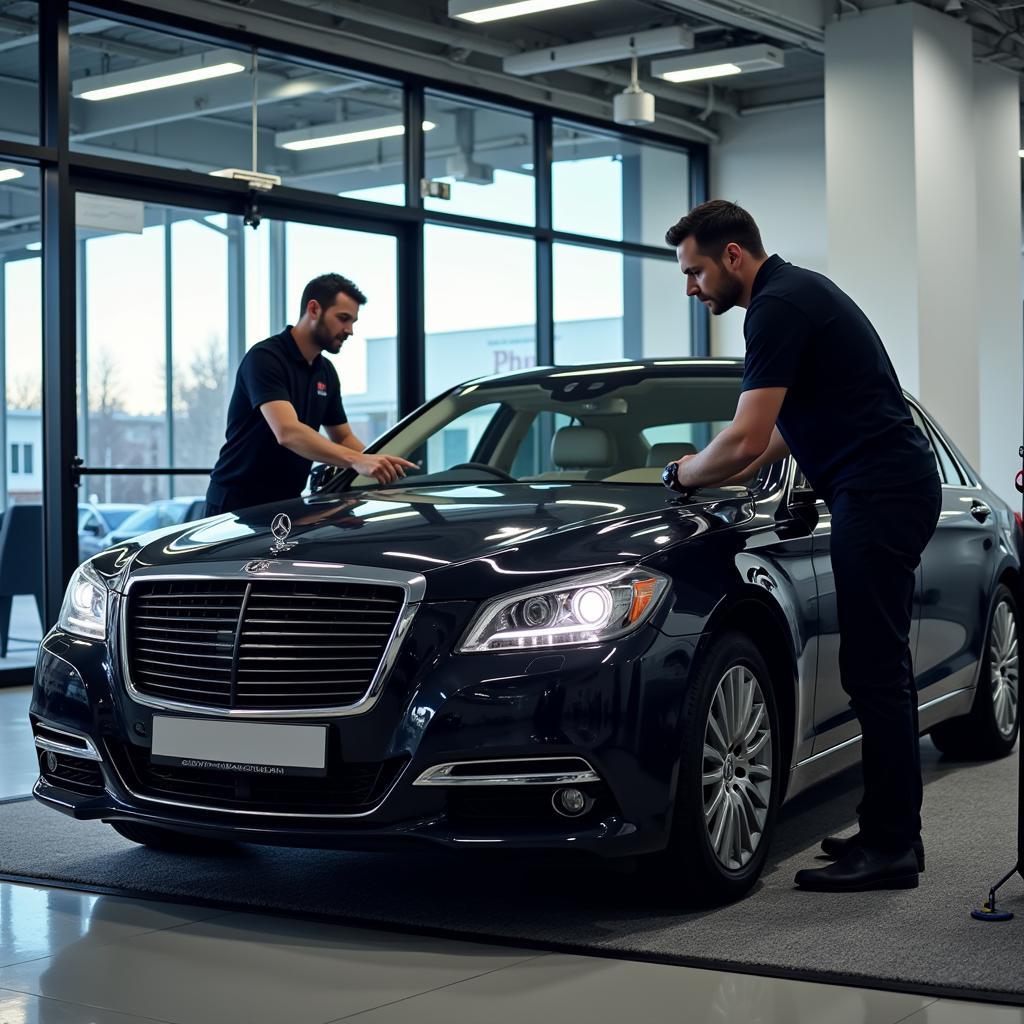Car LED lighting offers numerous advantages, including increased brightness, energy efficiency, and longer lifespan. However, even with these benefits, several common problems can arise. This article will delve into the most frequently encountered issues with car LED lighting and offer practical solutions to help you resolve them. After reading this, you’ll be well-equipped to diagnose and fix your LED lighting troubles. What are you waiting for? Let’s illuminate the common issues!
Understanding the Nuances of LED Lighting Issues
Before diving into specific problems, it’s essential to understand the nature of LED technology. LEDs are semiconductors that emit light when an electric current passes through them. Unlike traditional halogen bulbs, they don’t rely on a filament, which makes them more durable and efficient. However, this difference also means they are susceptible to unique problems. For example, LEDs are sensitive to voltage fluctuations and temperature changes. Having a grasp of these fundamentals will help you troubleshoot more effectively. Ready to tackle some common car LED lighting problems?
One frequent complaint is flickering or strobing LEDs. This can be caused by a faulty LED driver, a loose connection, or a problem with the vehicle’s electrical system. Sometimes, the fix is as simple as tightening a connection. Other times, it might require replacing the LED driver or even the entire LED unit.
Troubleshooting Common Problems with Car LED Lighting
Here’s a breakdown of common issues and how to address them:
- Flickering/Strobe: As mentioned, check all connections first. If the connections are secure, the LED driver might be faulty and require replacement. Could it be something more complex? Absolutely! A failing alternator or voltage regulator in your vehicle can also cause flickering.
- Dimming: Dim LEDs can indicate a failing LED, a weak power supply, or even a corroded connector. Start by inspecting the connectors for corrosion. Cleaning them might resolve the issue. If not, test the voltage reaching the LED. If the voltage is low, the problem might lie in the car’s electrical system.
- Burnout (one or more LEDs within the unit): Individual LEDs within a unit can burn out, leading to reduced light output. While replacing the entire unit is often recommended, some DIY enthusiasts might attempt to replace the individual LEDs. However, this requires specific soldering skills and knowledge of LED circuitry.
- Radio Interference: LEDs can sometimes interfere with car radios. This is usually due to electromagnetic interference (EMI) emitted by the LED driver. Using high-quality LED bulbs with proper shielding can minimize this problem. Sometimes, relocating the LED driver or adding a ferrite core to the power wires can also help.
- Hyperflashing (turn signal indicators): LED turn signals draw less current than traditional bulbs, which can cause the turn signal relay to think a bulb is out and hyperflash. This can be resolved by installing a load resistor or replacing the turn signal relay with one designed for LED bulbs.
John Smith, a seasoned automotive electrician with over 20 years of experience, shares his insights, “One common mistake people make is assuming the LED itself is bad when they encounter a problem. Often, the issue lies in the wiring or the power supply.”
Why Choosing the Right LED Matters
Not all LED bulbs are created equal. Cheap, low-quality LEDs are more prone to failure and can even damage your car’s electrical system. Opting for reputable brands and ensuring compatibility with your vehicle’s specifications is crucial. “Investing in quality LEDs will save you time and money in the long run,” advises Sarah Johnson, an automotive lighting specialist.
How can I prevent common car LED lighting problems?
Start by purchasing high-quality LEDs from reputable manufacturers. Ensure proper installation and avoid handling LEDs with bare hands. Regular checks for loose connections and corrosion can also help prevent future issues.
toyota car models acceleration problem
What are the benefits of switching to LED car lights?
LEDs offer superior brightness, consume less energy, last longer, and have faster response times than traditional halogen bulbs. They also provide a cleaner, whiter light that improves visibility.
problem with dollar rental car
Conclusion
Common Problems With Car Led Lighting range from flickering and dimming to complete burnout. By understanding the potential causes and following the troubleshooting steps outlined in this article, you can effectively diagnose and resolve most LED lighting issues. Remember, choosing high-quality LEDs and ensuring proper installation are key to avoiding problems down the road. Need help diagnosing or fixing your car’s lighting? Connect with us at AutoTipPro for expert assistance. Our team is ready to help you illuminate your path!
Contact us at +1 (641) 206-8880 or visit our office at 500 N St Mary’s St, San Antonio, TX 78205, United States.
FAQ
-
My LED headlights are flickering. What should I do? Check the connections and ensure they are secure. If the problem persists, the LED driver might be faulty.
-
Why are my LED taillights dimmer than before? Check the connectors for corrosion and clean them if necessary. A weak power supply or a failing LED could also be the culprit.
-
Do I need a special relay for LED turn signals? You might need a load resistor or a specialized LED-compatible relay to prevent hyperflashing.
-
Can LEDs interfere with my car radio? Yes, some LEDs can cause radio interference. Using high-quality LEDs and adding a ferrite core to the power wires can help.
-
How long do car LEDs typically last? LEDs are known for their long lifespan, often exceeding 50,000 hours.
-
Are LED car lights legal? Yes, LED car lights are legal in most jurisdictions, as long as they meet specific regulations regarding color and intensity.
-
Where can I find reliable LED car lights? Reputable auto parts stores and online retailers offer a wide selection of high-quality LED car lights.





Leave a Reply